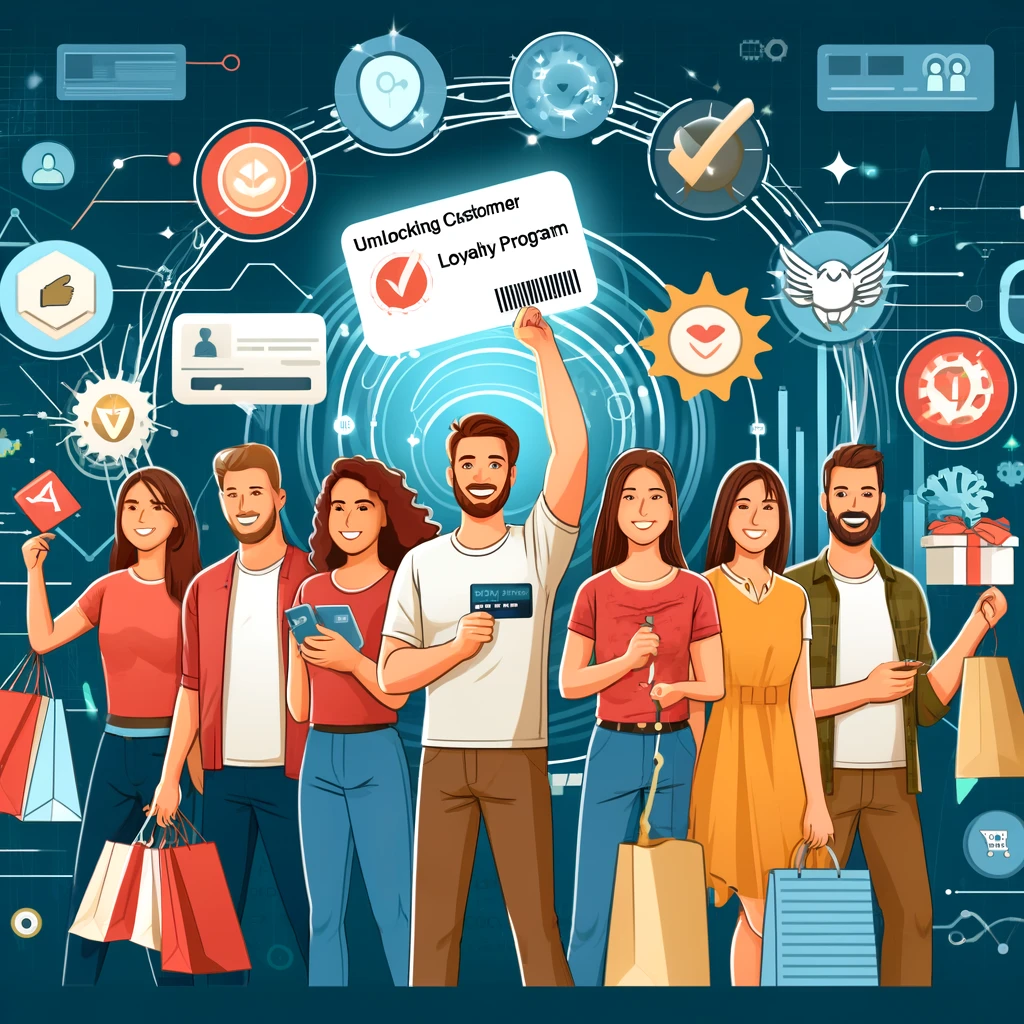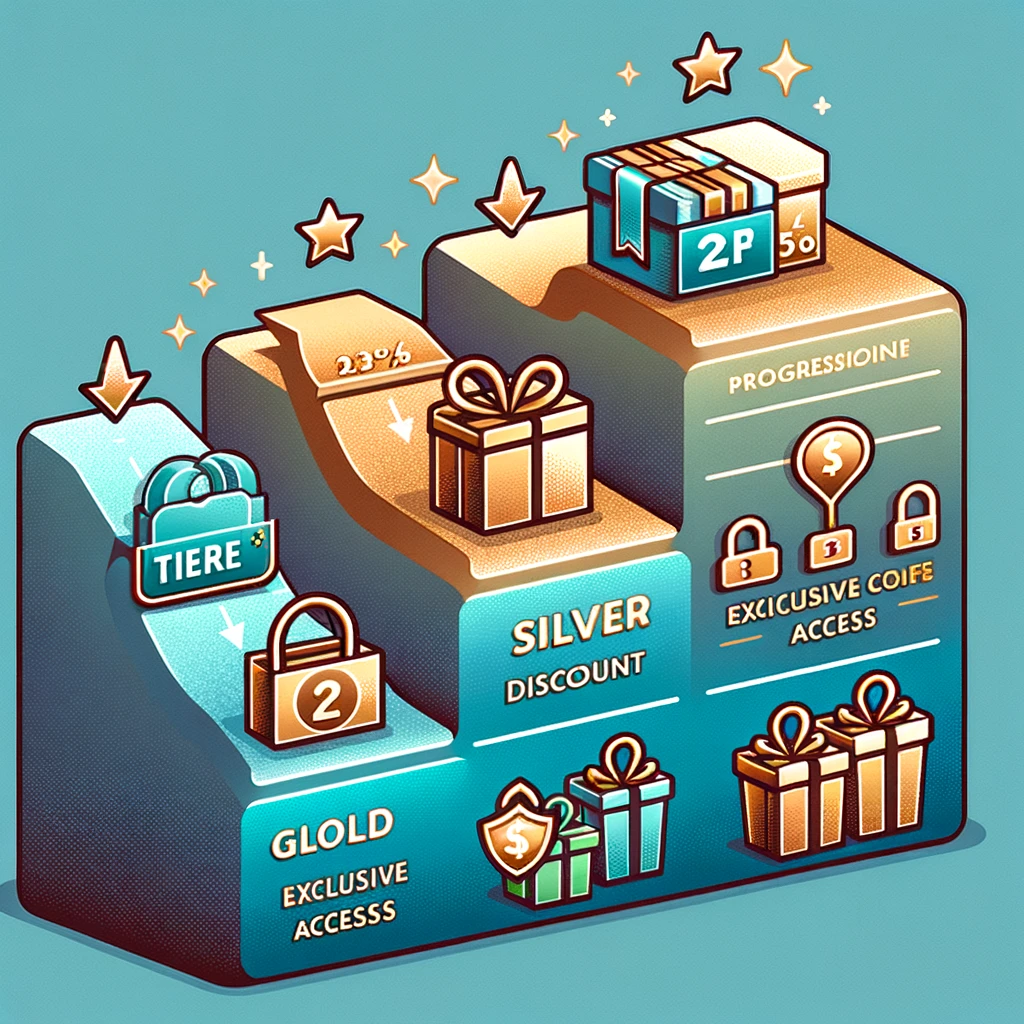
Boosting Business Success with Innovative Loyalty and Reward Programs
Loyalty and reward programs are strategic marketing initiatives designed to encourage customers to continue buying a company's products or services. These programs aim to build long-term relationships with customers by offering incentives for repeat business. The importance of loyalty programs has grown significantly in today's competitive market, where businesses strive to differentiate themselves and retain their customer base.
Historically, loyalty programs date back to the 18th century, with the introduction of copper tokens given to customers for future discounts on purchases. In the 20th century, loyalty programs evolved with the introduction of stamps and points systems, such as the famous Green Stamps in the United States. Today, digital transformation has further revolutionized these programs, making them more accessible and personalized through mobile apps and online platforms.
Current trends in loyalty programs reflect the increasing importance of customer engagement and the use of technology to deliver more personalized and seamless experiences. Businesses are now leveraging data analytics, artificial intelligence, and machine learning to understand customer behavior and tailor rewards to individual preferences. This shift has made loyalty programs a crucial component of modern marketing strategies, helping companies foster deeper connections with their customers and drive long-term growth.
Types of Loyalty Programs
Point-Based Programs
Point-based loyalty programs are among the most common and straightforward types of programs. Customers earn points for every purchase they make, which can be redeemed for rewards, such as discounts, free products, or exclusive offers. This type of program is popular because it is easy for customers to understand and participate in. Examples include airline frequent flyer programs, where travelers accumulate miles, and retail store programs, where shoppers earn points per dollar spent.
Tiered Programs

Tiered loyalty programs offer different levels of rewards based on a customer's engagement or spending. These programs encourage customers to spend more to achieve higher tiers, which offer more significant benefits. For example, a program might have Bronze, Silver, and Gold tiers, with Gold members receiving the most exclusive rewards. This type of program not only incentivizes increased spending but also fosters a sense of achievement and exclusivity among customers.
Paid Programs
Paid loyalty programs, also known as premium or subscription-based programs, require customers to pay a fee to join. In return, members receive exclusive benefits, such as free shipping, early access to sales, or special discounts. Amazon Prime is a prime example of a paid loyalty program, offering members a wide range of perks for an annual or monthly fee. Paid programs can generate immediate revenue for businesses and attract highly engaged customers who are willing to invest in the benefits offered.
Cashback Programs
Cashback programs reward customers with a percentage of their purchase amount returned to them in cash or as a credit to their account. These programs are popular in the financial services industry, particularly with credit card companies. Cashback programs are attractive to customers because they provide a tangible and immediate benefit, often seen as more valuable than accumulating points or miles.
Coalition Programs
Coalition loyalty programs involve multiple businesses partnering to offer a shared rewards program. Customers can earn and redeem points across a network of participating companies, providing greater flexibility and value. Examples include the Air Miles program in Canada and the Nectar program in the UK. Coalition programs benefit businesses by expanding their reach and customer base while offering customers a broader range of options for earning and using rewards.
Hybrid Programs
Hybrid loyalty programs combine elements of various types of programs to create a more comprehensive and appealing offering. For example, a program might offer points-based rewards but also include tiered benefits and paid membership options. Hybrid programs allow businesses to tailor their loyalty initiatives to better meet the needs and preferences of their diverse customer base, enhancing overall effectiveness and engagement.
Benefits of Loyalty Programs for Businesses
Increased Customer Retention
One of the primary benefits of loyalty programs is increased customer retention. By rewarding repeat purchases and ongoing engagement, loyalty programs encourage customers to stay loyal to a brand. Retaining existing customers is often more cost-effective than acquiring new ones, making loyalty programs a valuable tool for maintaining a steady customer base.
Enhanced Customer Engagement
Loyalty programs provide a platform for businesses to engage with their customers regularly. Through personalized offers, exclusive events, and targeted communications, businesses can build stronger relationships with their customers. Engaged customers are more likely to become brand advocates, spreading positive word-of-mouth and driving new customer acquisition.
Higher Customer Lifetime Value
By encouraging repeat business and increased spending, loyalty programs can significantly boost customer lifetime value (CLV). Customers who participate in loyalty programs tend to spend more over time, leading to higher revenue and profitability for businesses. Additionally, loyal customers are often less price-sensitive and more willing to try new products or services, further increasing their value to the company.
Improved Customer Data and Insights
Loyalty programs generate valuable data on customer behavior, preferences, and purchasing patterns. This information can be used to refine marketing strategies, personalize customer experiences, and optimize product offerings. By analyzing loyalty program data, businesses can gain deeper insights into their customers and make more informed decisions to drive growth.
Competitive Advantage
In a crowded marketplace, loyalty programs can provide a significant competitive advantage. A well-designed program can differentiate a brand from its competitors and create a unique value proposition for customers. Businesses that effectively leverage loyalty programs can build stronger brand loyalty and increase market share, positioning themselves for long-term success.
Benefits of Loyalty Programs for Customers
Personalized Rewards and Experiences
Loyalty programs often offer personalized rewards and experiences based on individual customer preferences and behavior. This customization makes customers feel valued and appreciated, enhancing their overall experience with the brand. Personalized rewards can range from tailored discounts and offers to exclusive access to events and products.
Cost Savings
Customers can enjoy significant cost savings through loyalty programs. By earning points, cashback, or discounts on their purchases, customers can reduce their overall spending. These savings can be particularly appealing during economic downturns or for budget-conscious consumers, making loyalty programs an attractive proposition.
Exclusive Access to Products and Services
Many loyalty programs offer members exclusive access to products, services, or experiences that are not available to non-members. This exclusivity can create a sense of privilege and excitement among customers, further strengthening their loyalty to the brand. Examples include early access to new product launches, VIP events, and members-only sales.
Increased Satisfaction and Brand Loyalty
Loyalty programs contribute to increased customer satisfaction by providing tangible rewards and recognition for their continued patronage. Satisfied customers are more likely to remain loyal to a brand and recommend it to others. By consistently delivering value through their loyalty programs, businesses can foster long-term relationships and build a loyal customer base.
Designing an Effective Loyalty Program
Understanding Your Customer Base
The foundation of an effective loyalty program is a deep understanding of your customer base. This involves analyzing customer demographics, preferences, and purchasing behavior to identify what motivates them. By segmenting your customers and tailoring your loyalty program to meet their specific needs, you can increase engagement and participation.
Setting Clear Objectives
Before designing a loyalty program, it is essential to establish clear objectives. These objectives should align with your overall business goals and define what you aim to achieve through the program. Common objectives include increasing customer retention, boosting sales, enhancing customer engagement, and gathering valuable customer data.
Choosing the Right Type of Program
Selecting the right type of loyalty program is crucial to its success. Consider the nature of your business, your target audience, and your objectives when choosing a program type. For example, a retail business might benefit from a point-based program, while a service-oriented company might find a tiered program more effective. Hybrid programs can also be a good option if you want to offer a comprehensive range of rewards and benefits.
Creating a Simple and Attractive Reward System
The reward system should be simple, transparent, and attractive to customers. Complicated or unclear reward structures can deter participation and reduce the effectiveness of the program. Ensure that the rewards offered are desirable and provide real value to your customers. Regularly update and refresh the rewards to keep the program exciting and relevant.
Integrating Technology
Technology plays a crucial role in the success of modern loyalty programs. Utilize digital platforms, mobile apps, and data analytics to streamline program management and enhance customer experience. Mobile apps can provide customers with easy access to their rewards, personalized offers, and real-time updates. Data analytics can help you track program performance, identify trends, and make data-driven decisions.
Challenges in Implementing Loyalty Programs
High Costs and Resource Allocation
Implementing and maintaining a loyalty program can be costly and resource-intensive. Businesses need to invest in technology, marketing, and rewards to ensure the program's success. It is essential to carefully budget and allocate resources to avoid overspending and ensure a positive return on investment.
Complexity in Managing Programs
Managing a loyalty program can be complex, especially as it grows and evolves. Businesses must ensure that the program runs smoothly, with accurate tracking of points, rewards, and customer data. Regular monitoring and updates are necessary to address any issues and keep the program relevant and engaging.
Ensuring Customer Participation
One of the significant challenges of loyalty programs is ensuring customer participation. If customers do not find the program appealing or beneficial, they may not engage with it. To address this, businesses must continuously promote the program, highlight its benefits, and make it easy for customers to join and participate.
Measuring Effectiveness
Measuring the effectiveness of a loyalty program can be challenging. Businesses need to track various metrics, such as customer retention rates, sales growth, and customer satisfaction, to evaluate the program's impact. It is crucial to establish key performance indicators (KPIs) and regularly review them to assess the program's success and make necessary adjustments.
Case Studies of Successful Loyalty Programs
Starbucks Rewards
Starbucks Rewards is one of the most successful loyalty programs globally, known for its simplicity and effectiveness. Customers earn "Stars" for every purchase, which can be redeemed for free drinks, food, and other rewards. The program also offers personalized offers, birthday rewards, and early access to new products. Starbucks uses data analytics to tailor rewards and enhance customer experience, driving high levels of engagement and loyalty.
Amazon Prime
Amazon Prime is a paid loyalty program that offers members a wide range of benefits, including free two-day shipping, access to streaming services, exclusive deals, and more. The program has been highly successful in increasing customer retention and spending, with millions of members worldwide. Amazon Prime's value proposition is so strong that many customers consider it indispensable, leading to a significant increase in customer lifetime value.
Sephora Beauty Insider
Sephora's Beauty Insider program is a tiered loyalty program that offers customers rewards based on their spending levels. Members can earn points for every purchase, which can be redeemed for beauty products, experiences, and exclusive events. The program also includes birthday gifts, free beauty classes, and early access to sales. Sephora's program is praised for its personalization and ability to make customers feel valued and appreciated.
Tesco Clubcard
Tesco Clubcard is a coalition loyalty program that allows customers to earn points for every purchase made at Tesco and its partner stores. Points can be redeemed for vouchers, discounts, and rewards from a wide range of partners, including restaurants, travel companies, and entertainment providers. The program has been instrumental in driving customer loyalty and increasing sales for Tesco, making it one of the most successful loyalty programs in the UK.
Examples from Small Businesses
Small businesses can also benefit from loyalty programs. For instance, a local coffee shop might implement a punch card system, where customers receive a free drink after a certain number of purchases. A boutique might offer a VIP program with exclusive discounts and early access to new collections. These programs can drive repeat business and foster a loyal customer base, even for small enterprises.

Future Trends in Loyalty Programs

Integration of AI and Machine Learning
The integration of artificial intelligence (AI) and machine learning is transforming loyalty programs. These technologies enable businesses to analyze vast amounts of customer data, predict behavior, and deliver highly personalized rewards and experiences. AI can also automate various aspects of program management, reducing costs and improving efficiency.
Blockchain and Cryptocurrency Rewards
Blockchain technology is emerging as a potential game-changer for loyalty programs. It offers increased security, transparency, and flexibility, allowing customers to earn and redeem rewards across multiple businesses seamlessly. Cryptocurrency rewards are also gaining traction, providing customers with innovative and valuable incentives.
Omnichannel Loyalty Programs
Omnichannel loyalty programs provide a seamless and integrated experience across various channels, including in-store, online, and mobile. These programs allow customers to earn and redeem rewards regardless of how they interact with the brand, enhancing convenience and engagement. Omnichannel loyalty programs are essential for businesses looking to provide a consistent and cohesive customer experience.
Sustainability and Ethical Rewards
As consumers become more conscious of environmental and social issues, loyalty programs are increasingly incorporating sustainability and ethical rewards. Businesses can offer rewards that align with customers' values, such as donations to charitable organizations, eco-friendly products, or support for local communities. These initiatives can enhance brand reputation and attract socially responsible customers.
Conclusion
Loyalty and reward programs have become an integral part of modern marketing strategies, offering significant benefits for both businesses and customers. By fostering customer retention, engagement, and satisfaction, these programs can drive long-term growth and profitability. However, designing and implementing an effective loyalty program requires careful planning, resource allocation, and ongoing management.
The evolving landscape of loyalty programs, driven by technological advancements and changing consumer preferences, presents both challenges and opportunities for businesses. By staying attuned to these trends and continuously innovating, companies can create loyalty programs that not only meet the needs of their customers but also provide a competitive edge in the market.
In conclusion, loyalty and reward programs are more than just marketing tools; they are strategic initiatives that can transform customer relationships and drive business success. Whether you are a small business or a global corporation, investing in a well-designed loyalty program can yield significant returns and help you build a loyal and engaged customer base.
